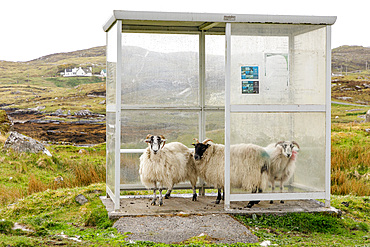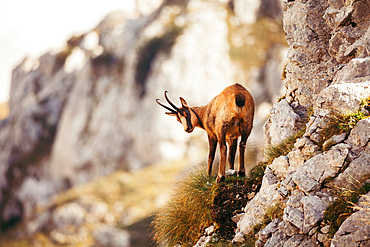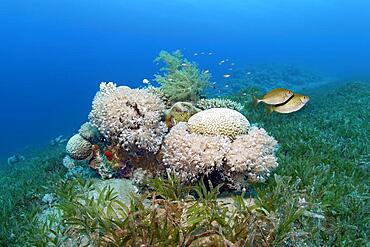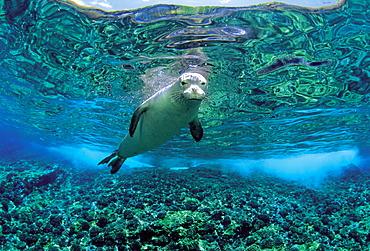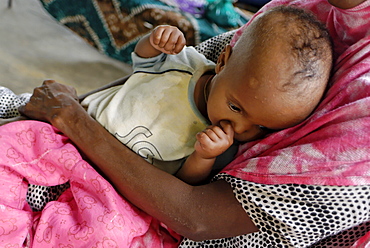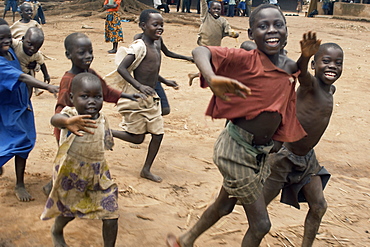Recent searches
Loading...
1113-107343 - Sheep flee from rain in bus shelter, shelter, Harris, Outer Hebrides, Scotland UK
746-90125 - Wild chamois in Abruzzo, Apennines, Italy, Europe
746-90124 - Wild chamois in Abruzzo, Apennines, Italy, Europe
832-393721 - Small patch reef in seagrass meadow with predominantly Xenia (Xenia) soft corals, pair of dusky spinefoot (Siganus luridus) escapes, Red Sea, Aqaba, Kingdom of Jordan
1116-47953 - A plate full of candy covered donuts on a running track with a female runner in a lane in a starter stance, Calgary, Alberta, Canada
832-382586 - Young man with sunglasses running from a high wave, La Palma, Canary Islands, Spain, Europe
832-381489 - A bullfighter tries to escape a chasing bull, Camargue races, Arles Amphitheatre, Arles, Provence-Alpes-Cote d'Azur, France, Europe
832-379630 - Fleeing, jumping Impala (Aepyceros melampus), Maasai Mara National Reserve, Narok County, Kenya, Africa
911-10769 - Black Legged Kittiwake (Rissa tridactyla) and Northern Fulmar (Fulmarus glacialis) flee from a large calving of ice of the face of a glacier in northern Svalbard in the high Arctic.
911-10165 - Black Headed Gulls fedding on Seaweed flies that are being flushed out of the seaweed on the strand line at high tide, at Boulmer, Northumberland, UK.
817-439082 - India, Goa State,Anjuna Flee Market, Local woman
1195-12 - Kenya,dadaab refugees camp, somalian border gtz hospital ,the camps were set up around the town of dadaab beginning in 1991 when civil wars erupted on a grand scale in somalia (16 rival factions were involved). The wars, along with a prolonged drought, forced more than 900,000 somalis to flee to neighboring countries. Approximately 400,000 of them, many of whom were in a serious state of exhaustion and starvation, took refuge in kenya. Since then, a majority have returned to their country. However, some 131,000 somalis remain in kenya, and 110,000 are in dadaab, along with some sudanese, ugandans, and about 3,000 ethiopians women waiting the receive care from gtz ngo at the local hospital
1195-9 - Kenya,dadaab refugees camp, somalian border gtz hospital ,the camps were set up around the town of dadaab beginning in 1991 when civil wars erupted on a grand scale in somalia (16 rival factions were involved). The wars, along with a prolonged drought, forced more than 900,000 somalis to flee to neighboring countries. Approximately 400,000 of them, many of whom were in a serious state of exhaustion and starvation, took refuge in kenya. Since then, a majority have returned to their country. However, some 131,000 somalis remain in kenya, and 110,000 are in dadaab, along with some sudanese, ugandans, and about 3,000 ethiopians women waiting the receive care from gtz ngo at the local hospital
1195-1 - Kenya,dadaab refugees camp, somalian border gtz hospital ,the camps were set up around the town of dadaab beginning in 1991 when civil wars erupted on a grand scale in somalia (16 rival factions were involved). The wars, along with a prolonged drought, forced more than 900,000 somalis to flee to neighboring countries. Approximately 400,000 of them, many of whom were in a serious state of exhaustion and starvation, took refuge in kenya. Since then, a majority have returned to their country. However, some 131,000 somalis remain in kenya, and 110,000 are in dadaab, along with some sudanese, ugandans, and about 3,000 ethiopians women waiting the receive care from gtz ngo at the local hospital . wounds due to boiling water for tea . lots of kids get burned by open flames fires into the camp as they play around without parents control
1195-11 - Kenya,dadaab refugees camp, somalian border gtz hospital ,the camps were set up around the town of dadaab beginning in 1991 when civil wars erupted on a grand scale in somalia (16 rival factions were involved). The wars, along with a prolonged drought, forced more than 900,000 somalis to flee to neighboring countries. Approximately 400,000 of them, many of whom were in a serious state of exhaustion and starvation, took refuge in kenya. Since then, a majority have returned to their country. However, some 131,000 somalis remain in kenya, and 110,000 are in dadaab, along with some sudanese, ugandans, and about 3,000 ethiopians women waiting the receive care from gtz ngo at the local hospital
1195-6 - Kenya,dadaab refugees camp, somalian border gtz hospital ,the camps were set up around the town of dadaab beginning in 1991 when civil wars erupted on a grand scale in somalia (16 rival factions were involved). The wars, along with a prolonged drought, forced more than 900,000 somalis to flee to neighboring countries. Approximately 400,000 of them, many of whom were in a serious state of exhaustion and starvation, took refuge in kenya. Since then, a majority have returned to their country. However, some 131,000 somalis remain in kenya, and 110,000 are in dadaab, along with some sudanese, ugandans, and about 3,000 ethiopians women waiting the receive care from gtz ngo at the local hospital
1195-10 - Kenya,dadaab refugees camp, somalian border gtz hospital ,the camps were set up around the town of dadaab beginning in 1991 when civil wars erupted on a grand scale in somalia (16 rival factions were involved). The wars, along with a prolonged drought, forced more than 900,000 somalis to flee to neighboring countries. Approximately 400,000 of them, many of whom were in a serious state of exhaustion and starvation, took refuge in kenya. Since then, a majority have returned to their country. However, some 131,000 somalis remain in kenya, and 110,000 are in dadaab, along with some sudanese, ugandans, and about 3,000 ethiopians women waiting the receive care from gtz ngo at the local hospital
1195-2 - Kenya,dadaab refugees camp, somalian border gtz hospital ,the camps were set up around the town of dadaab beginning in 1991 when civil wars erupted on a grand scale in somalia (16 rival factions were involved). The wars, along with a prolonged drought, forced more than 900,000 somalis to flee to neighboring countries. Approximately 400,000 of them, many of whom were in a serious state of exhaustion and starvation, took refuge in kenya. Since then, a majority have returned to their country. However, some 131,000 somalis remain in kenya, and 110,000 are in dadaab, along with some sudanese, ugandans, and about 3,000 ethiopians women waiting the receive care from gtz ngo at the local hospital
1195-8 - Kenya,dadaab refugees camp, somalian border gtz hospital ,the camps were set up around the town of dadaab beginning in 1991 when civil wars erupted on a grand scale in somalia (16 rival factions were involved). The wars, along with a prolonged drought, forced more than 900,000 somalis to flee to neighboring countries. Approximately 400,000 of them, many of whom were in a serious state of exhaustion and starvation, took refuge in kenya. Since then, a majority have returned to their country. However, some 131,000 somalis remain in kenya, and 110,000 are in dadaab, along with some sudanese, ugandans, and about 3,000 ethiopians women waiting the receive care from gtz ngo at the local hospital
1195-3 - Kenya,dadaab refugees camp, somalian border gtz hospital ,the camps were set up around the town of dadaab beginning in 1991 when civil wars erupted on a grand scale in somalia (16 rival factions were involved). The wars, along with a prolonged drought, forced more than 900,000 somalis to flee to neighboring countries. Approximately 400,000 of them, many of whom were in a serious state of exhaustion and starvation, took refuge in kenya. Since then, a majority have returned to their country. However, some 131,000 somalis remain in kenya, and 110,000 are in dadaab, along with some sudanese, ugandans, and about 3,000 ethiopians women waiting the receive care from gtz ngo at the local hospital
1195-7 - Kenya,dadaab refugees camp, somalian border gtz hospital ,the camps were set up around the town of dadaab beginning in 1991 when civil wars erupted on a grand scale in somalia (16 rival factions were involved). The wars, along with a prolonged drought, forced more than 900,000 somalis to flee to neighboring countries. Approximately 400,000 of them, many of whom were in a serious state of exhaustion and starvation, took refuge in kenya. Since then, a majority have returned to their country. However, some 131,000 somalis remain in kenya, and 110,000 are in dadaab, along with some sudanese, ugandans, and about 3,000 ethiopians women waiting the receive care from gtz ngo at the local hospital
1195-4 - Kenya,dadaab refugees camp, somalian border gtz hospital ,the camps were set up around the town of dadaab beginning in 1991 when civil wars erupted on a grand scale in somalia (16 rival factions were involved). The wars, along with a prolonged drought, forced more than 900,000 somalis to flee to neighboring countries. Approximately 400,000 of them, many of whom were in a serious state of exhaustion and starvation, took refuge in kenya. Since then, a majority have returned to their country. However, some 131,000 somalis remain in kenya, and 110,000 are in dadaab, along with some sudanese, ugandans, and about 3,000 ethiopians women waiting the receive care from gtz ngo at the local hospital
1195-14 - Kenya,dadaab refugees camp, somalian border gtz hospital ,the camps were set up around the town of dadaab beginning in 1991 when civil wars erupted on a grand scale in somalia (16 rival factions were involved). The wars, along with a prolonged drought, forced more than 900,000 somalis to flee to neighboring countries. Approximately 400,000 of them, many of whom were in a serious state of exhaustion and starvation, took refuge in kenya. Since then, a majority have returned to their country. However, some 131,000 somalis remain in kenya, and 110,000 are in dadaab, along with some sudanese, ugandans, and about 3,000 ethiopians women waiting the receive care from gtz ngo at the local hospital .malnourrish child
1195-5 - Kenya,dadaab refugees camp, somalian border gtz hospital ,the camps were set up around the town of dadaab beginning in 1991 when civil wars erupted on a grand scale in somalia (16 rival factions were involved). The wars, along with a prolonged drought, forced more than 900,000 somalis to flee to neighboring countries. Approximately 400,000 of them, many of whom were in a serious state of exhaustion and starvation, took refuge in kenya. Since then, a majority have returned to their country. However, some 131,000 somalis remain in kenya, and 110,000 are in dadaab, along with some sudanese, ugandans, and about 3,000 ethiopians women waiting the receive care from gtz ngo at the local hospital
1195-13 - Kenya,dadaab refugees camp, somalian border gtz hospital ,the camps were set up around the town of dadaab beginning in 1991 when civil wars erupted on a grand scale in somalia (16 rival factions were involved). The wars, along with a prolonged drought, forced more than 900,000 somalis to flee to neighboring countries. Approximately 400,000 of them, many of whom were in a serious state of exhaustion and starvation, took refuge in kenya. Since then, a majority have returned to their country. However, some 131,000 somalis remain in kenya, and 110,000 are in dadaab, along with some sudanese, ugandans, and about 3,000 ethiopians women waiting the receive care from gtz ngo at the local hospital
999-3 - Mel, the Killer Whale or Orca (Orcinus orca) narrowly misses out on a South American Sea Lion (Otaria flavescens) that it was hunting, in Patagonia. Of the 18 only 7 have mastered the stranding behaviour whereby the Orca enters the shallow surf to feed on Sea Lion pups. Distinctive by his 2 metre dorsal fin, Mel is an expert hunter who feeds on Sea Lion pups before taking them back to his pod. This lucky Sea Lion however managed to escape the hunter's attentions.
999-4 - Mel, the Killer Whale or Orca (Orcinus orca) narrowly misses out on a South American Sea Lion (Otaria flavescens) that it was hunting, in Patagonia. Of the 18 only 7 have mastered the stranding behaviour whereby the Orca enters the shallow surf to feed on Sea Lion pups. Distinctive by his 2 metre dorsal fin, Mel is an expert hunter who feeds on Sea Lion pups before taking them back to his pod. This lucky Sea Lion however managed to escape the hunter's attentions.
999-1 - Mel, the Killer Whale or Orca (Orcinus orca) narrowly misses out on a South American Sea Lion (Otaria flavescens) that it was hunting, in Patagonia. Of the 18 only 7 have mastered the stranding behaviour whereby the Orca enters the shallow surf to feed on Sea Lion pups. Distinctive by his 2 metre dorsal fin, Mel is an expert hunter who feeds on Sea Lion pups before taking them back to his pod. This lucky Sea Lion however managed to escape the hunter's attentions.
999-2 - Mel, the Killer Whale or Orca (Orcinus orca) narrowly misses out on a South American Sea Lion (Otaria flavescens) that it was hunting, in Patagonia. Of the 18 only 7 have mastered the stranding behaviour whereby the Orca enters the shallow surf to feed on Sea Lion pups. Distinctive by his 2 metre dorsal fin, Mel is an expert hunter who feeds on Sea Lion pups before taking them back to his pod. This lucky Sea Lion however managed to escape the hunter's attentions.
999-5 - Mel, the Killer Whale or Orca (Orcinus orca) narrowly misses out on a South American Sea Lion (Otaria flavescens) that it was hunting, in Patagonia. Of the 18 only 7 have mastered the stranding behaviour whereby the Orca enters the shallow surf to feed on Sea Lion pups. Distinctive by his 2 metre dorsal fin, Mel is an expert hunter who feeds on Sea Lion pups before taking them back to his pod. This lucky Sea Lion however managed to escape the hunter's attentions.
975-41 - An IDP camp (internally displaced people) in Te-Tugu district of Northern Uganda has been created to accommodate the mass of Ugandan refugees fleeing the LRA (Lords Resistance Army) who are fighting the Ugandan government and its people. With population sizes equivalent to small towns, this camp has a real community spirit. Te-Tugu, Uganda, East Africa
975-40 - One of the more substantial dwellings in Te-Tugu IDP camp, made from bricks and even has a veranda. An IDP camp (internally displaced people) in Te-Tugu district of Northern Uganda has been created to accommodate the mass of Ugandan refugees fleeing the LRA (Lords Resistance Army) who are fighting the Ugandan government and its people. Te-Tugu, Uganda, East Africa
975-44 - An IDP camp (internally displaced people) in Amuru district of Northern Uganda has been created to accommodate the mass of Ugandan refugees fleeing the LRA (Lords Resistance Army) who are fighting the Ugandan government and its people. An inquisitive teenage boy is holding an exercise book. Amuru, Uganda, East Africa
975-46 - Inside a typical mud hut, commonly found in Gulu Town, Northwest Uganda. Family are without father who is out working during the day. Gulu Town, Uganda, East Africa
975-128 - An IDP camp (internally displaced people) in Te-Tugu district of Northern Uganda has been created to accommodate the mass of Ugandan refugees fleeing the LRA (Lords Resistance Army) who are fighting the Ugandan government and its people. Te-Tugu, Uganda, East Africa
975-53 - Young residents enjoy smiling in front of camera, Gulu Town, Northwest Uganda. Gulu Town, Uganda, East Africa
975-59 - An IDP camp (internally displaced people) in Amuru district of Northern Uganda has been created to accommodate the mass of Ugandan refugees fleeing the LRA (Lords Resistance Army) who are fighting the Ugandan government and its people. With little to do for the children, foreign visitors are a welcome distraction and they are really happy to see you. Amuru, Uganda, East Africa
975-48 - An IDP camp (internally displaced people) in Te-Tugu district of Northern Uganda has been created to accommodate the mass of Ugandan refugees fleeing the LRA (Lords Resistance Army) who are fighting the Ugandan government and its people. Children are plentiful in these camps and are far safer here than neighbouring villages. Te-Tugu, Uganda, East Africa
975-47 - Proud mother shows off her children for a photo opportunity, on the road near their home. They are without dad who will be out working. Gulu Town, Uganda. Gulu Town, Uganda, East Africa
975-34 - An IDP camp (internally displaced people) in Te-Tugu district of Northern Uganda has been created to accommodate the mass of Ugandan refugees fleeing the LRA (Lords Resistance Army) who are fighting the Ugandan government and its people. With all attempts to be self-sufficient in these camps, the women have to work the land as well as look after dependants. Te-Tugu, Uganda, East Africa
975-61 - Time off from domestic chores and hard core playing, mothers rest in the shade with their children, listening to the radio. Gulu Town, Uganda, East Africa
975-60 - An IDP camp (internally displaced people) in Amuru district of Northern Uganda has been created to accommodate the mass of Ugandan refugees fleeing the LRA (Lords Resistance Army) who are fighting the Ugandan government and its people. Here you can see some of the many children, lined up by their school building. Amuru, Uganda, East Africa
979-1351 - Atlantic flying fish (Cypselurus melanurus) fleeing the bow and taking flight for safety near Ascension Island in the Atlantic Ocean.
979-1348 - Atlantic flying fish (Cypselurus melanurus) fleeing the bow and taking flight for safety near Ascension Island in the Atlantic Ocean.
979-1350 - Atlantic flying fish (Cypselurus melanurus) fleeing the bow and taking flight for safety near Ascension Island in the Atlantic Ocean.
979-1346 - Atlantic flying fish (Cypselurus melanurus) fleeing the bow and taking flight for safety near Ascension Island in the Atlantic Ocean.
979-1349 - Atlantic flying fish (Cypselurus melanurus) fleeing the bow and taking flight for safety near Ascension Island in the Atlantic Ocean.
979-1347 - Atlantic flying fish (Cypselurus melanurus) fleeing the bow and taking flight for safety near Ascension Island in the Atlantic Ocean.
979-1345 - Atlantic flying fish (Cypselurus melanurus) fleeing the bow and taking flight for safety near Ascension Island in the Atlantic Ocean.
832-1834 - Impala (Aepyceros melampus) buck fleeing, blurred movement, Samburu National Reserve, Kenya, East Africa, Africa
829-877 - An impala (Apyceros melampus) running in South Africa's Kruger National Park.
817-14955 - Springbok (Antidorcas marsupialis), running down dune after sighting a cheetah, Kgalagadi Transfrontier Park (formerly Kalahari-Gemsbok National Park), South Africa
You reached the end of search results
